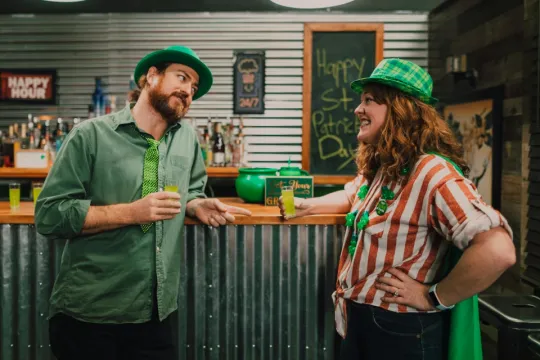Discover the charm of elves: legends, traditions and cultural significance.

In the rich fabric of Irish folklore, few characters capture the imagination as much as leprechauns or leprechauns. With their antics, elusive nature and iconic appearance, these little creatures have become synonymous with Irish culture and St. Patrick's Day celebrations around the world. But who are the elves and what do they represent? In this comprehensive guide, we delve into the legends, lore, and cultural significance of elves and illuminate the enduring fascination of these enigmatic creatures.
Origins of the elf
The origins of the leprechaun date back to ancient Celtic mythology, where he was known as "lobaircin" or "little man with a small body." In ancient Irish folklore, leprechauns were depicted as solitary creatures that inhabited the remote landscapes of Ireland, often in hidden underground caves or hollow trees. Over time, the image of the leprechaun evolved, incorporating elements of Gaelic folklore and Christian symbolism into the iconic figure we know today.
Leprechaun Characteristics
Goblins are usually depicted as short, elderly men dressed in traditional green clothing and pointed hats. They are known for their expertise, particularly in shoe-making, and are often depicted with a pot of gold coins that they hide at the end of a rainbow. Despite their small size, goblins possess magical powers and are known for their cunning and malevolence, often frustrating those who attempt to capture them and steal their treasure.
The legend of the leprechaun's gold
One of the most enduring legends about leprechauns is the story of their elusive treasure of gold. According to folklore, if a human catches a goblin, he has the power to grant it three wishes in exchange for its freedom. However, catching a leprechaun is no easy task as it is a master of disguise and can disappear in the blink of an eye. Many stories tell how the goblins hunted individually for their treasures, only to be outdone by their cunning pranks and illusions.
Cultural meaning of the elf
The leprechaun holds a special place in Irish culture, symbolizing good luck, mischief and the spirit of the Irish people. His association with St. Patrick's Day celebrations, parades and festivals helped popularize the image of the leprechaun as a playful and festive figure, representing the spirit of Irish hospitality and good luck. Today, the leprechaun has become an iconic symbol of Ireland, adorning everything from souvenirs and clothing to advertising campaigns and tourist attractions.
Modern interpretations and adaptations.
In addition to their traditional role in Irish folklore, leprechauns have also found their way into modern popular culture through literature, film and television. From classic works of Irish literature like WB Yeats' Celtic Twilight to contemporary films like Darby O'Gill and Disney's Goblin King, leprechauns continue to captivate audiences with their charm and whimsy. In recent years there has been a renewed interest in Irish mythology and folklore, leading to new interpretations and adaptations of the leprechaun legend for modern audiences.
Diploma
The leprechaun remains a popular and iconic figure in Irish folklore, embodying the spirit of luck, mischief and magic that has captured the imagination for centuries. Whether as mischievous pranksters or benevolent guardians of hidden treasures, elves fascinate and delight people of all ages with their whimsical charm and enduring appeal.